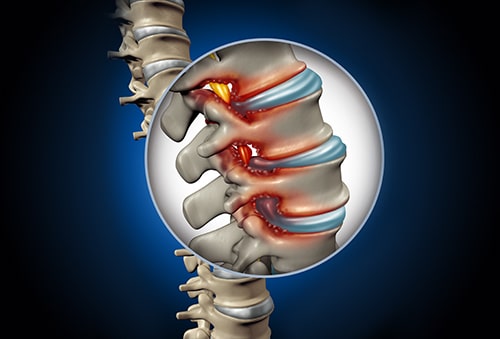Would you like to continue or select additional body parts?

- Home
- Conditions
Stenosis
-
The bones of the spine create a channel for the spinal cord and nerve roots. Stenosis refers to the narrowing of this channel, which puts pressure on the nerves that travel through the spine and the spinal cord, resulting in pain and other symptoms throughout the body.
-
Stenosis typically appears slowly over time, so symptoms may begin mildly and progress with the disease. Depending on which region of the spine with stenosis (cervical, thoracic, or lumbar), symptoms can include:
– Neck or back pain
– Numbness, weakness, or a tingling sensation in the arms or legs
– Difficulty walking or balancing
– In severe cases, bowel or bladder dysfunction -
While some patients are born with this narrowing, most cases of stenosis are the result of aging and wear-and-tear on the spine. Other causes of stenosis can include herniated discs, overgrowth of bone or bone spurs, thickened ligaments, and spinal injuries.
-
Your doctor may first recommend conservative treatment for mild cases of stenosis, including pain medication or physical therapy. Steroid injections can help reduce inflammation and relieve some of the pain. For more progressive conditions or when conservative treatments fail to provide relief, surgical options such as a laminectomy may be recommended to relieve the pressure on the spinal cord or nerve roots by creating more space within the spinal canal.